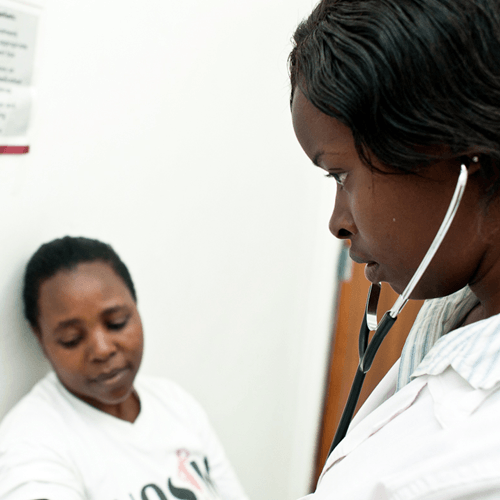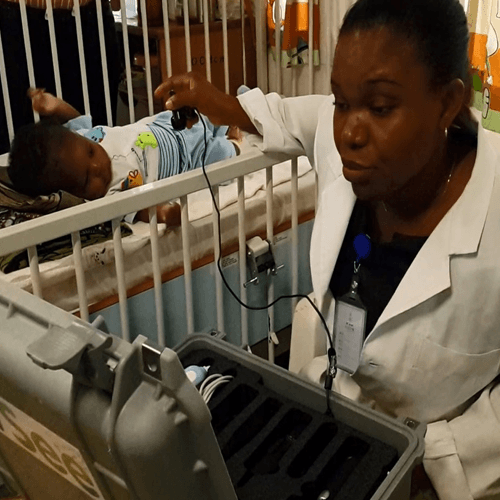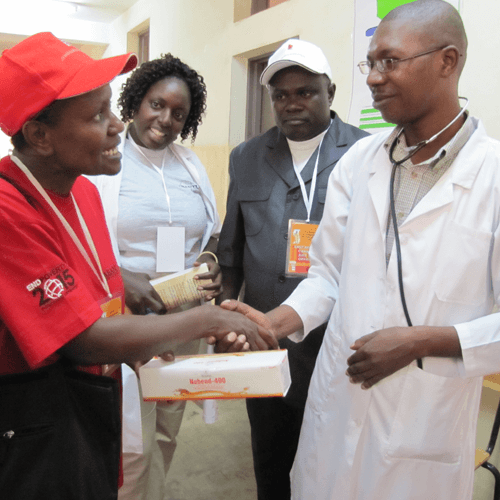
clinic




Materials for Clinic
Patients were drawn from Kampala and the surrounding districts. During a two-year period, 1366 patients were treated in this trial at Mariandina Nutritional Health (MNH) in Kampala. They had clinical examinations after recording their name, age, weight, sex, and history.
Each patient was given a card on which details about the illness and the medication were recorded. Haemoglobin, erythrocyte sedimentation rate, immunology testing, CD4 counts, and ELISA HIV tests were used. Patients reported for assessment and the supply of drugs once a month. Relevant investigations were carried out for the presenting symptoms and signs. X-rays of the chest were done to exclude pulmonary tuberculosis. Stool culture and sensitivity was done where diarrhoea was a complaint. Out of the total number of 1366 patients, 689 were male and 677, female.
Everyone, except the sick, was treated as outpatients and only the seriously ill patients were admitted mostly for I.V. infusion when patients presented with severe dehydration as a result of diarrhoea and vomiting. Diabetic patients were advised to continue with their hypoglycaemic drugs. Patients with diarrhoea had stool culture and sensitivity tests done as well as microscopy for ova and cysts, a proper antibiotic given. Anti-uberculosis therapy was given to those with evidence of tuberculosis. Streptomycin, Isoniazid, Rifampicin, Ethambutol and pyrazinamide were given where necessary. Antimalarial treatment consisted of chloroquine sulphadoxine and pyrimethamine. Prophylactic antimalarial therapy consisted of one tablet of sulphadoxine and pyrimethamine a week. Those cases where meningitis was suspected, a lumbar puncture was done and Indian ink and gram stain used. Antibiotics including fluconazole were used for cryptococcal meningitis but combined with Mariandina A.
All patients diagnosed as HIV positive by ELISA or Western blot, were put on Mariandina A tablets. Each tablet is 1500mg and a patient is given 4500mg three times a day. All the Mariandina tablets were given after meals or taken with milk. Where vomiting was a symptom, we used metoclopramide as a prophylactic one hour before administering the drugs. Patients were encouraged to eat beans, fish, vegetables and fruits over and above their usual diet.
Results: One thousand, three hundred and sixty-six patients (1366) were treated for AIDS using Mariandina A for a period ranging from six to twenty- four months. The clinical response using Karnofski’s performance score is shown in Table 1.
The results were grouped as follows:
a) Improved – Karnofsky’s score rose by over 20 points, CD4 counts rose by over 50/mm3, Hb rose by over 1.0 gm/dI-1 sand ESR fell by less than 20 mm/hr (Westergren)
b) Stable – if Karnofski’s score rose by less than 20 points CD4 counts rose by 50/mm-2, Hb rose less than 1.0 gm/di-1 and ESR fell by less than 20 mm after one hour (Westergren). They remained with minor symptoms and signs.
c) Deteriorated – if registered a progressive decline in Karnofski’s score, Hb, CD4, but showed a steady or progressive rise in Erythrocyte Sedimentation Rate (ESR) if the patient died. The number of the dead was 125
d) Lost to follow – up patients were those who did not appear at the clinic for six consecutive months. Some traced later were found to have discharged themselves because they had thought themselves free from the virus as no symptoms bothered them. The age distribution of the 1366 patients treated, ranged from 20-45 years
These organisms that were responsible for the infective diarrhoea were found resistant to chloramphenicol, ampicillin and co-trimoxazole in 74% of the cases. They were sensitive to rifampicin and gentamicin and cephalexin. Others included cases of gastrointestinal candidiasis, staph aureus, S. faecal and mixed enterobacterial infections.
When the 366 cases that had shown a significant rise in the CD4 count over a period of 24 months were analysed, it was realised that they all showed an initial decline in counts. The decline varied from 100-200 mm in the first three months and was followed by a lag period of about two months before a graphic rise in the months that followed. This phenomenon was attributed to the possibility that infected cells are destroyed at the beginning of the treatment before there was a significant rise in the number of healthy CD4 cells in the subsequent period. Mariandina A is thought to be capable of triggering the death of infected CD4 cells as a result of the cytotoxic and antiviral activity of CD8 T Helper lymphocytes that rise in a number at this stage.
These 1366 patients were followed up clinically using Karnofski’s performance scores. Haematological data like Hb, CD4 and erythrocyte sedimentation rate was measured on 366 patients only for the period of treatment. Analysis of the patients’ responses to two complete years of treatment were categorised as in Table 1.